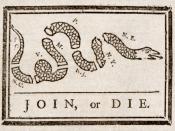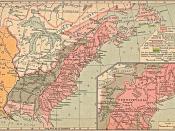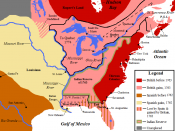Stamp Act Protest
After the French and Indian war, Britain, although victorious, was left with a debt of 140 million pounds. The British believed that the colonists should share the burden of sustaining the British troops in the colonies. The colonists were then enforced with harsh tariffs such as the well known Stamp Act. However, the protest of the colonist was such that the act was repealed and thus the American Revolution was soon under way.
In order for the British to recover from their debt, the British, led by Greenville imposed several acts on the colonists. The first were the Navagation Acts which were designed to bring money into the Royal Treasury, to develop the imperial merchant fleet in order to channel the flow of colonial raw materials into England. Then came the passage of the Sugar Act raising duty on sugar. This was an effort by the British to raise money in America to support the increased cost of colonial administration.
The colonists were also forced into a Quartering Act in which they would provide housing and food for the British troops.
In 1765, the British led by the Prime Minister at that time, George Greenville enacted the Stamp Act. This act required for all legal documents such as licenses, commercial contracts, newspapers, pamphlets and playing cards to carry a tax stamp. The Stamp Act was later employed in Great Britain and was intended to raise money to clear the cost of maintaining the military defenses of the colonies.
Colonist responded with protest for this and all other imposed tariffs. They were exceptionally upset when the British announced that colonial offenders were to be tried in the Hated Admiralty Courts. With increasing unsettledness the protests also increased and the colonists began to develop what became
Known as the...


